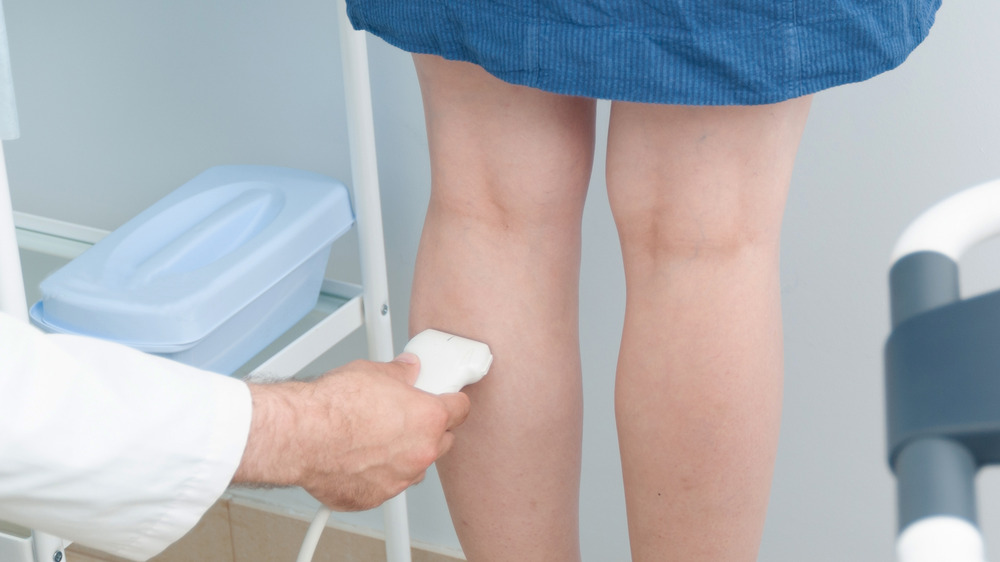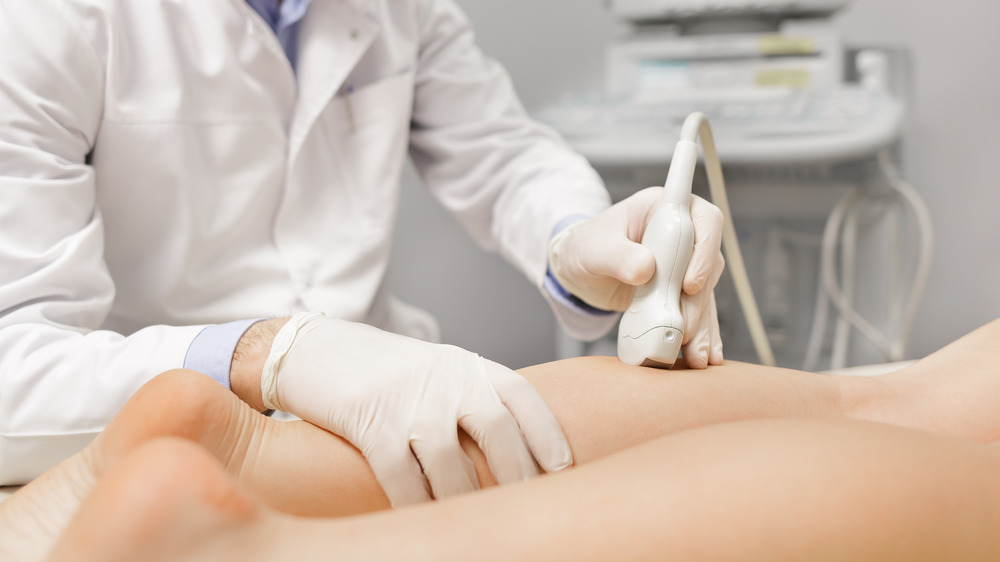The Truth About Varicose Veins
Those with varicose veins may be familiar with things like supportive stockings, body makeup, and the need to elevate your legs after a long day of standing or walking. And while the condition can be frustrating, anyone living with varicose veins is far from alone, as nearly 25 percent of adults have them (via Healthline).
These enlarged, dilated veins are also called varicoses or varicosities, and usually appear raised and blue. The most common place to have varicose veins is on the lower legs. There are multiple causes of this condition, and one or a combination of a few can increase your chances of having them. Causes include family history of varicose veins, pregnancy, habitually standing for long periods of time, obesity, menopause, and being over the age of 50.
While the condition can be painful and some people who have varicose veins feel they are unsightly, they don't usually cause serious health issues. However, if you are experiencing pain, swelling, fatigue, heaviness, or other symptoms that are becoming problematic in your daily life, it's definitely worth getting checked out by a doctor. Usually, they will perform an ultrasound to check blood flow, and they may also use an injectable dye to clearly see the details of the affected veins.
Treating varicose veins
While very minor varicose veins may not cause you enough trouble to consider treatment, there are many options and degrees of intervention for the condition. Lifestyle changes such as losing weight if you are medically considered to be obese and spending less time on your feet can be part of a good start if either of those are contributing factors in your particular case (via Healthline). If, however, you can't get off your feet more (like if you are a server at a restaurant), your doctor may suggest wearing compression socks or compression stockings to help reduce swelling, improve circulation, and prevent further varicose veins from forming.
According to the Mayo Clinic, if you have a more severe case, there are many other non-invasive and also minor surgical procedures that can help relieve your symptoms. Even the surgical options don't usually require an overnight stay in a hospital and have a quick recovery time. You could opt for laser treatments, sclerotherapy (in which an injectable fluid helps to close off the vein safely), ambulatory phlebectomy (small skin punctures to remove the vein and leaves minimal scarring), or high ligation and vein stripping (tying off a vein and removing it with very small incisions). These last two options are outpatient surgical procedures, but are generally well tolerated by patients. Only in the case of severe varicose veins accompanied by ulcers would you require more significant surgical intervention.

